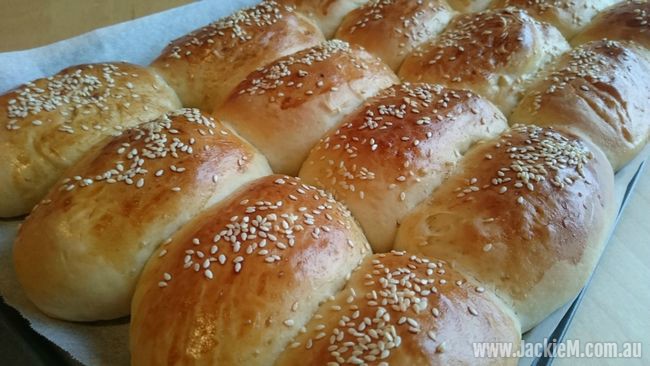Camp-Ready Food – Lamb 2 Ways, Chakalaka, Bak Kwa (South Africa Meets Malaysia 2)
In this South Africa Meets Malaysia broadcast, Paul and I decided to kill two birds with one stone, ie. cook up a storm and pack the food to take with us on a weekend church retreat later that day. We had a boneless leg of lamb and some minced beef in the fridge along with some vegetables, so we decided on the following menu:
- Grilled lamb fillets (reverse-seared)
- Malaysian lamb curry using my Handcrafted by Jackie M. Meat Curry Paste
- Beef Bak Kwa using a recipe I had previously posted here – https://jackiem.com.au/2018/03/09/make-chicken-beef-bak-kwa-barbecued-minced-meat/
- Chakalaka (a South African side/relish that I’d never come across prior to that day)
Here’s the replay of the livestream (1 hr 08 mins long) –
1. Grilled Lamb Fillets (reverse-seared) by Paul:
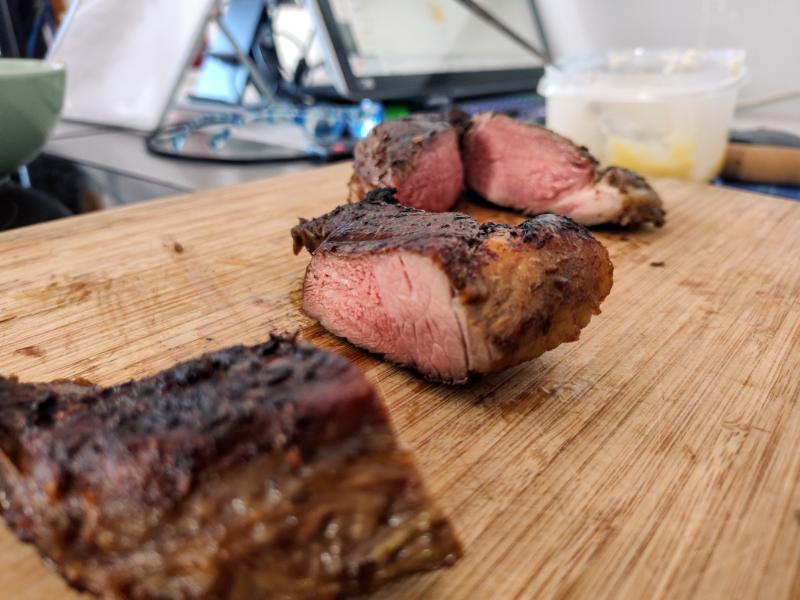
Paul experimented with the lamb two ways:
- Air fryer method: 120°C for 25 minutes. This cooked faster than expected, so it was closer to medium than medium-rare.
- Sous vide method: 55°C for 4 hours using the Thermomix sous vide function. This turned out more tender and juicy.
- Both were finished in a hot pan with butter and beef tallow for about 60 seconds a side, then rested for 5 minutes.
- His marinade was a mix of oyster sauce, garlic, chicken powder, cumin powder, and cumin seeds.
Keep in mind that oyster sauce contains sugar, so the meat caramelises and chars quickly in the pan.
2. Malaysian Lamb Curry by yours truly –
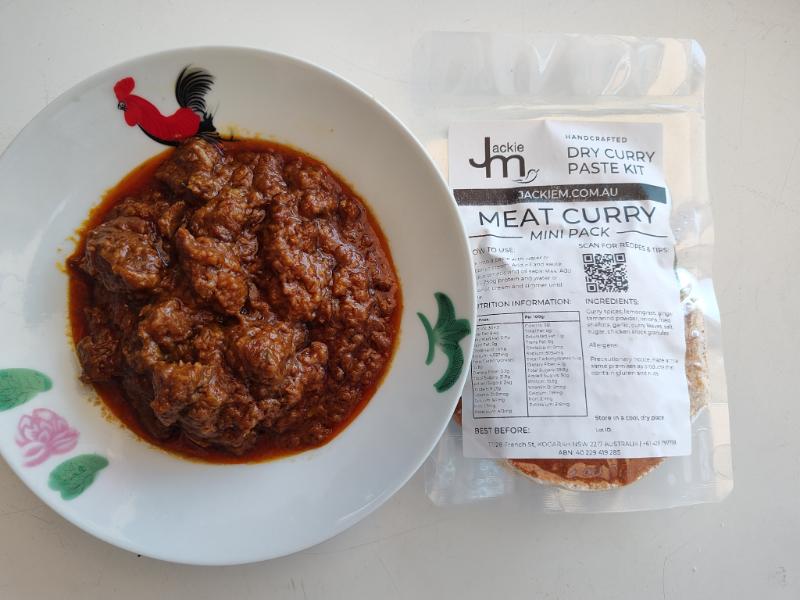
Since I didn’t want to get in Paul’s way on camera, I did my Malaysian lamb curry in the Thermomix, as follows:
- Dice the lamb.
- Add my meat curry paste, a little water, some oil, and coconut cream.
- Cook for 45 minutes at 120°C in the Thermomix on reverse stir, measuring cup on.
You don’t have to use a Thermomix; this recipe works just as well on the stovetop, in the oven, or in a slow cooker.
I do things agak-agak (guesstimate)-style – I didn’t weigh how much lamb was going in, nor measure the amount of water, oil or coconut cream – I just eyeballed everything. I would guess there was about 1kg of lamb in my batch, and I used a whole pack of my Family-Sized curry paste kit in it, probably about 1/2-2/3 cup water, and about the same amount of coconut cream, along with about 2 TBSP oil.
My packet instructions say to reconstitute the paste ingredients in water, saute for a couple of minutes with oil, then add the protein etc., but really, throwing everything in together works just as well when you’re cooking meat that requires a longer cooking time.
3. Chakalaka by Paul –
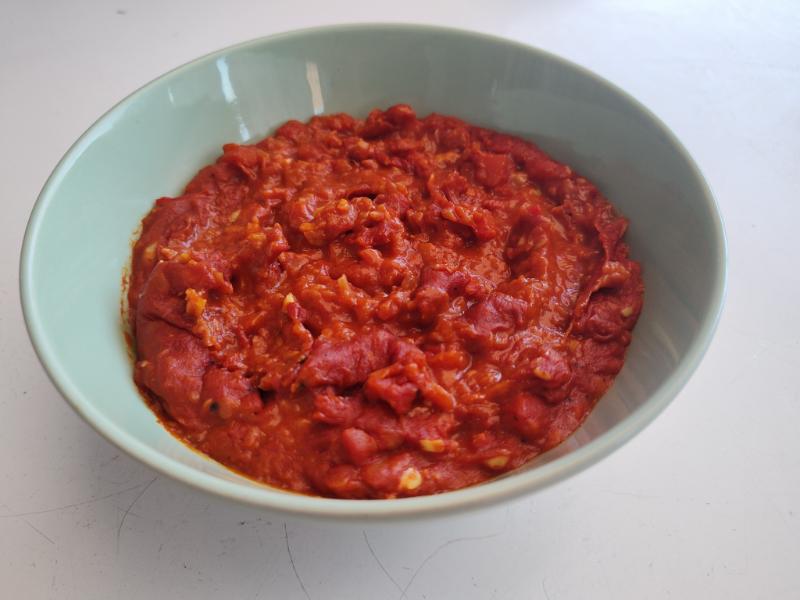
Paul also made chakalaka, a South African side dish often served with grilled meat and pap (maize porridge). He calls it the South African version of sambal.
The base ingredients are onions, garlic, ginger, carrots, capsicum, chillies, and tomato. We used an official Cookidoo (ie. Thermomix) recipe and skipped all the ingredients we didn’t happen to have on hand, ie. the capsicum and the beans. Despite their omission and the fact that we didn’t adapt the rest of the seasoning to accommodate their absence, the end result was really good and flavoursome (and not too salty etc. as you would have expected).
4. Bak Kwa (Malaysian-style Barbecued Meat Slices) by yours truly –
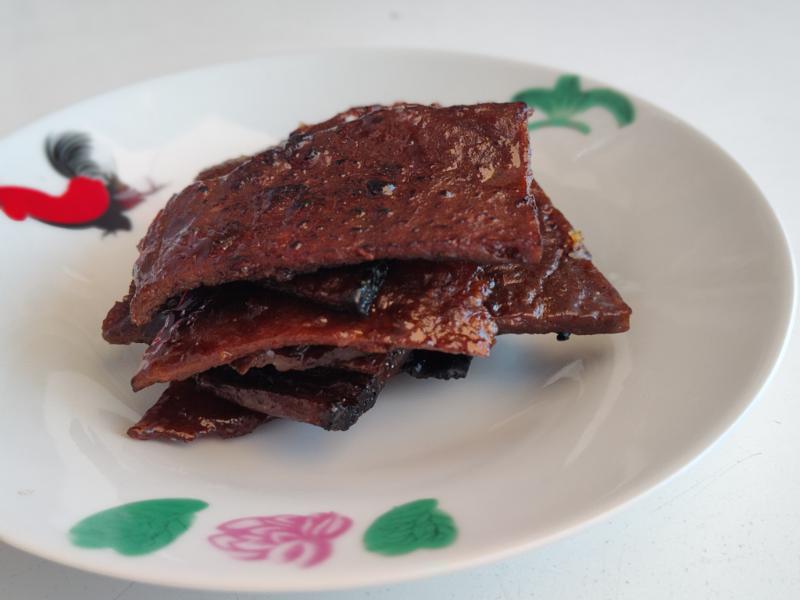
Bak kwa is something I used to make occasionally at my restaurant, and I revisited it for this session. This time I used beef mince, but pork or chicken will work too.
Ingredients (for 500 g mince):
- Thick cooking caramel (kicap pekat / caramel sauce)
- Five spice powder
- Fish sauce
- Soy sauce
- Chinese rice wine
- Sugar
- Oil
- Fried onion (I tested this to absorb moisture and add texture – didn’t really make any noticeable difference)
Method:
- Knead everything together until the mixture turns sticky. I used my Kenwood dough mixer with the K whisk.
- Roll it out thinly (about 2 mm). Traditionally I would place the mince in between parchment sheets before rolling with a rolling pin, but this time I tried heatproof cooking bags, which created much less mess.
- Bake at for 20 minutes.
- Cut into squares.
- The original recipe I published (refer link at top of this post) said to bake again, at 180C, for 20-30 minutes. Because I wanted to wrap up the session in a hurry, I skipped that step and instead, scorched the slices with a torch to create a smoky char. In hindsight I think they would have been better served being baked – it felt like the sugar didn’t not have enough time to soak through and caramelise the pieces.
FYI shop-bought bak kwa usually looks redder thanks to food colouring. Mine skips the colouring, but the flavour is the same.
Camp Food Packing Tips:
Apart from the above, we also had some beef rendang which I had made the day before – again, using my famous Handcrafted by Jackie M. Rendang Paste Kit – I made that in a slow cooker, also throwing everything in – the diced chuck crest, a pack of my curry paste, about half a cup of water, some coconut cream, and some oil – and cooking it on the high temperature setting for about 5 hours. At the end, I stirred in a couple of tablespoons of kerisik which I had made previously (completely optional) to give it that extra toasted coconut paste nuance.
What we took with us in two chiller bags (there was a fridge and a microwave onsite):
- Both beef rendang and lamb curry keep very well since they’re dry-ish and slow-cooked; we packed them in takeaway boxes.
- We vacuum-packed the bak kwa in small vacuum pouches – several slices per pack.
- We also vacuum-packed what was left after our lunch, of the reverse-seared lamb cutlets.
- We packed the chakalaka in a leak-proof tub.
- We packed some acar which I’d made in last week’s South Africa Meets Malaysia broadcast – but didn’t end up eating it because there was too much food in the end.
- A small thingy of bird’s eye chilli powder
As an FYI the food above was meant to supplement what was being served at the retreat; eg. we ‘d eat their rice/toast/even their scrambled eggs, but we’d scale it up with our stuff.
Why did we go through such trouble? You’re going to think we’re food snobs, and you’re probably right.
I just don’t like the idea of wasting my calorie allocation on forgettable food:
- I don’t eat pork, and being an Australian-run retreat, pork features a lot on the menu – think bacon, pork chops, pork sausages etc. If you ask for a pork-free serving, you may end up with less food (ie. the pork stuff are omitted but not always replaced with bigger portions of other stuff) or they give you a vegetarian substitute and you become an involuntary vegetarian for part of the weekend.
- We often joke about English food and how plain and bland it is – well, in my controversial opinion, the English influence on Australian camp food is still alive and well 200+ years after the poms settled in this country. My fellow retreat attendees will protest that hey, they did serve Butter Chicken for dinner – but look, it was an Indian dish in name only – any spice in it was so diluted the sauce might as well have been ketchup stirred into cream.
- For the record, everything else about the retreat was beautiful – the accommodation, the facilities, the staff (not to mention the talks) – but really, I wish they’d allow me to set up a market stall onsite next time for those attendees who, like me, prefer food with a bit more punch.



